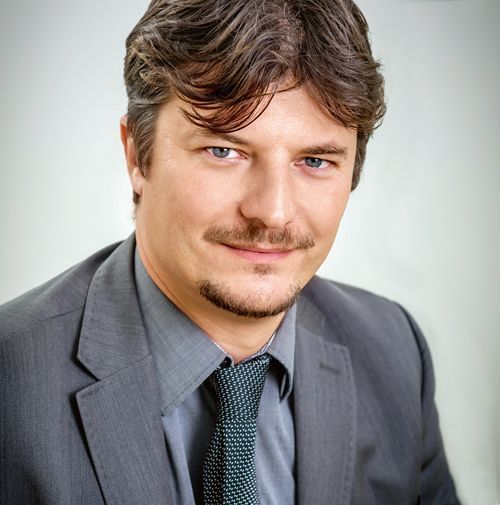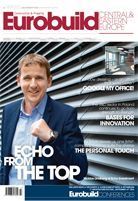Bases for innovation
Office & mixed-use development
Car rental chains that provide a pay by the minute hire service are now operating in Europe. They employ an extremely simple and user-friendly system. You register on it, use the code sent to your mobile phone to open the vehicle that is waiting for you on the street, and you can immediately start driving. The car can be left in another place, wherever suits you. In Vienna, Berlin and the majority of German cities, a few hundred cars are already available under this system. What does this have to do with Polish real estate? One significant tenant on the Polish office market, a branch of Capgemini, participated in the development of the software it uses. The creation of such new systems is one of the main fields of operation of companies representing the research and development (R&D) sector. “More than twelve years ago we set up our first research and development centre in Poland, in Wrocław. We started with a small team of 50 people on a few hundred square metres. Now we have 900 people and we are getting close to 10,000 sqm,” says Piotr Poprawski, the director of Capgemini Wrocław.
Where the giants dwell
Wrocław is one of the leading locations of the Polish R&D sector. Apart from Capgemini, the companies that operate here include Nokia, Dolby Laboratories, Viessmann, UTC Aerospace Systems, 3M and Diehl Controls. Siemens opened its first R&D centre in the CEE region as early as 2001. When Siemens merged with Nokia this became a shared centre of the newly-established joint-venture and is now one of Nokia’s largest research and development institutions in the ICT sector in Poland. “We are seeing most of the activity of companies from this sector in the mature markets, i.e. mainly in Warsaw, Kraków and Wrocław. However, companies are increasingly looking for alternative locations in order to find suitable staff,” explains Krzysztof Misiak, a partner and director of the regional city section in the office department of Cushman & Wakefield.
Samsung has also opened its largest European research and development centre in Poland. This was also the largest lease on the office market in the central part of Warsaw, within the boundaries of the city’s CBD to be precise. The Koreans leased an area of over 21,000 sqm in Warsaw Spire in 2015. “In this way Samsung is consolidating its Warsaw R&D centres. The company has been carrying out its research and development activities in three different buildings: Zebra Tower, IBC and Focus. This is changing now,” explains Karol Patynowski, the director of tenant representation at JLL.
Google has also not been idle in this regard. This year the company has extended the area it leased in the Warsaw Financial Center office building from 3,000 sqm to more than 8,000 sqm. The company has a number of R&D centres in Europe, the largest of which is located in Zurich; however, it is its Warsaw office that is currently undergoing the greatest transformation. “The office is gradually being enlarged. We are employing many people for the development of the Google Cloud Platform. Hence the need for more space,” says Piotr Zalewski of Google. Currently 200 people are employed in the office, half of whom are engineers and programmers working on the company’s global products. On the website of the American tech giant it is easy to find job offers connected with the recruitment drive that is currently taking place in Warsaw.
Slipping through the statistics
What is attracting these research and development centres to Poland? The main factor is the pool of educated and hard-working staff. “We are very well recognised on the market and we are also appreciated. Clients from Western Europe do not hesitate to entrust us with strategic projects because they know we will carry them out diligently and with a high level of quality,” explains Piotr Poprawski. How many private companies operate in this sector? Such data is difficult to obtain. Large consulting agencies have yet to carry out research into this due to the low availability of hard data and problems surrounding the classification of mid-sector companies. According to government statistics, only 43 enterprises in Poland (February’s data) have the status of R&D centres; however, looking at the statistics it can be clearly seen that this only includes a small percentage of the market. The majority of enterprises do not apply for the status of a research and development centre. Piotr Porawski explains that there are many centres that are not interested in applying for the various state benefits that official status would entitle them to. However, they in fact carry out activities that could be classified as R&D. “Around half of the operations of IT companies in Poland involve creating new software and systems. It is estimated that as many as 70,000 people currently work in the private research and development centre sector in Poland. If you take into consideration that an average office area of around 8–9 sqm is needed per employee, the sector occupies over half a million square metres of offices,” believes Piotr Porawski.
Area arrangement
What kind of premises are R&D companies looking for? Krzysztof Misiak explains that their requirements do not differ much from those of other business service companies, except for the standard – which is often higher. This is due to the average age of R&D employees and the fact that the sector usually needs high quality specialists. “These are often people who already have children. In this sector they often pay more attention to the ease of access by car, and not only by public transport. Car parks are important; however, facilities for cyclists should not be forgotten. According to our observations, the sector has the highest share of people travelling to work by bike,” says Krzysztof Misiak.
Because the work in the centres is creative, it can be encouraged by varied and inspiring surroundings. There has been a move away from open-plan space towards separate areas for individual teams. “We try to arrange our space in a way that makes it easier to concentrate. Dividing walls and glass elements are set up to separate the workstations from the passageways,” says Piotr Poprawski. Relaxation areas are also included. “You cannot expect employees working in this sector to sit at their desks all day. The provision of sporting and play activities is also important: a PlayStation in the office, a square, an area for playing basketball or table tennis, or one for informal interaction between co-workers,” says Krzysztof Misiak. As well as the separate workstations, there should also be a large number of separate meeting areas, conference rooms, sofas and armchairs that can be used to discuss ideas. “These companies are in a battle for employees and try to satisfy their needs in a non-standard way, by providing them with a better working environment. These are trends typical of sectors that have to compete for personnel. They do not pay so much attention to the costs of renting an office, because this constitutes only a fraction of their employment-related expenses. So they are increasingly tending to opt for more expensive approaches where higher quality is a feature,” explains Krzysztof Misiak.
R&D tenants are more likely to choose office buildings near city centres. Established companies with a long-term history, i.e. those that are stable enough to plan well in advance, sometimes decide to go for BTS projects. “At this time we have three clients of this sort who are considering expansion. We have recently heard from a few smaller companies looking for slightly smaller buildings. On the one hand they appreciate flexibility, on the other they do not always want to move to large-format projects. It is having a sense of identity that counts for them. These are ambitions that are more and more evident in this sector,” believes Krzysztof Misiak.
The technical requirements of tenants from the R&D sector are usually not too difficult for developers to meet. “They often focus on the energy security of the building, i.e. whether it is powered from two or even three independent sources. For some clients it is also necessary to install a power generator in order to maintain all the operations, particularly the server room and the sockets for the workstations as well as the ventilation and air-conditioning systems. Each desk often has two monitors on it and the server room has an advanced gas-based extinguishing system or water mist system,” says Karol Patynowski.
Focusing on growth
Capgemini has recently opened its second research and development centre following its first one in Wrocław. “We opened our centre in Poznań last December. So far it employs 50 people and has an area of 600 sqm. However, a very intensive expansion programme is planned,” says Piotr Poprawski. Capgemini, which has a total of 6,500 employees in Poland at the moment, is planning to have more than 1,000 people employed in the R&D sector and to continue its growth over the next few years. “We estimate that the increase will amount to 20 pct per year,” reports Piotr Poprawski.
Krzysztof Misiak emphasises that the significance of the sector has been steadily increasing, which is reflected not only in the number of transactions involving tenants from the sector, but also the fact that developers are more and more frequently trying to make their projects more attractive in terms of their expectations. Besides, there is no sign that the high demand for R&D services is set to decrease. So can the research and development industry in Poland expect a bright future? “The availability of staff is becoming more and more of a problem these days. It is definitely an employee’s or technical student’s market. “Students are being snapped even during their studies. Graduates of scientific studies are currently highly sought after,” says Piotr Poprawski. “The question is whether the education system, particularly the higher education system, will be able to keep up with the growth of the sector and produce a significantly higher number of technical and scientific graduates,” adds Krzysztof Misiak.





















































